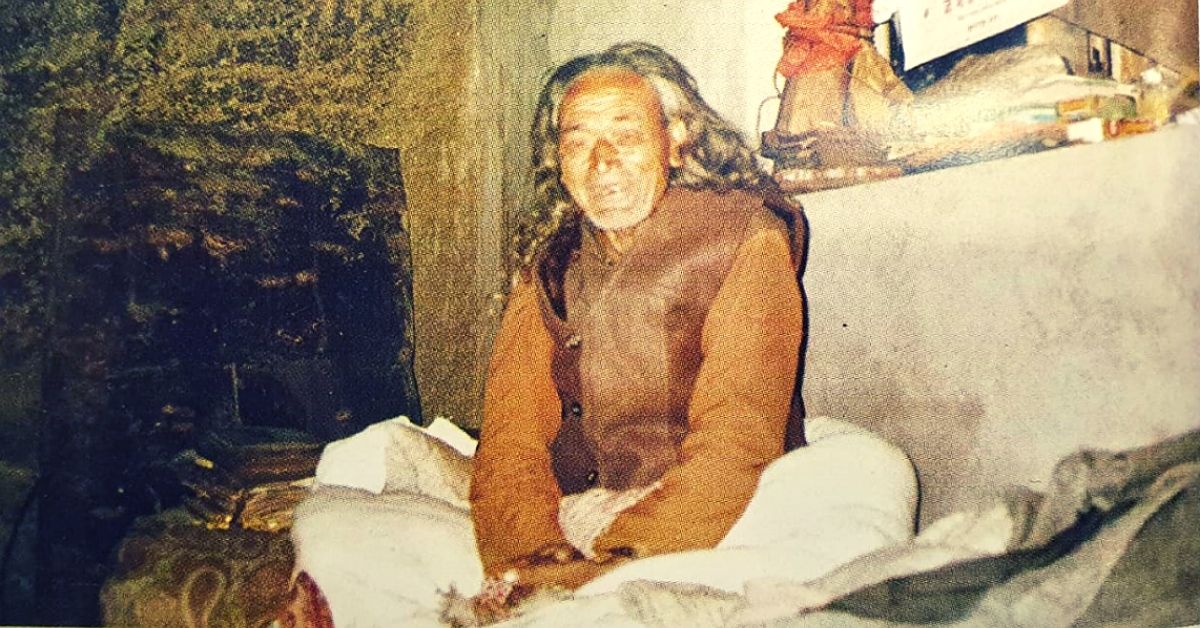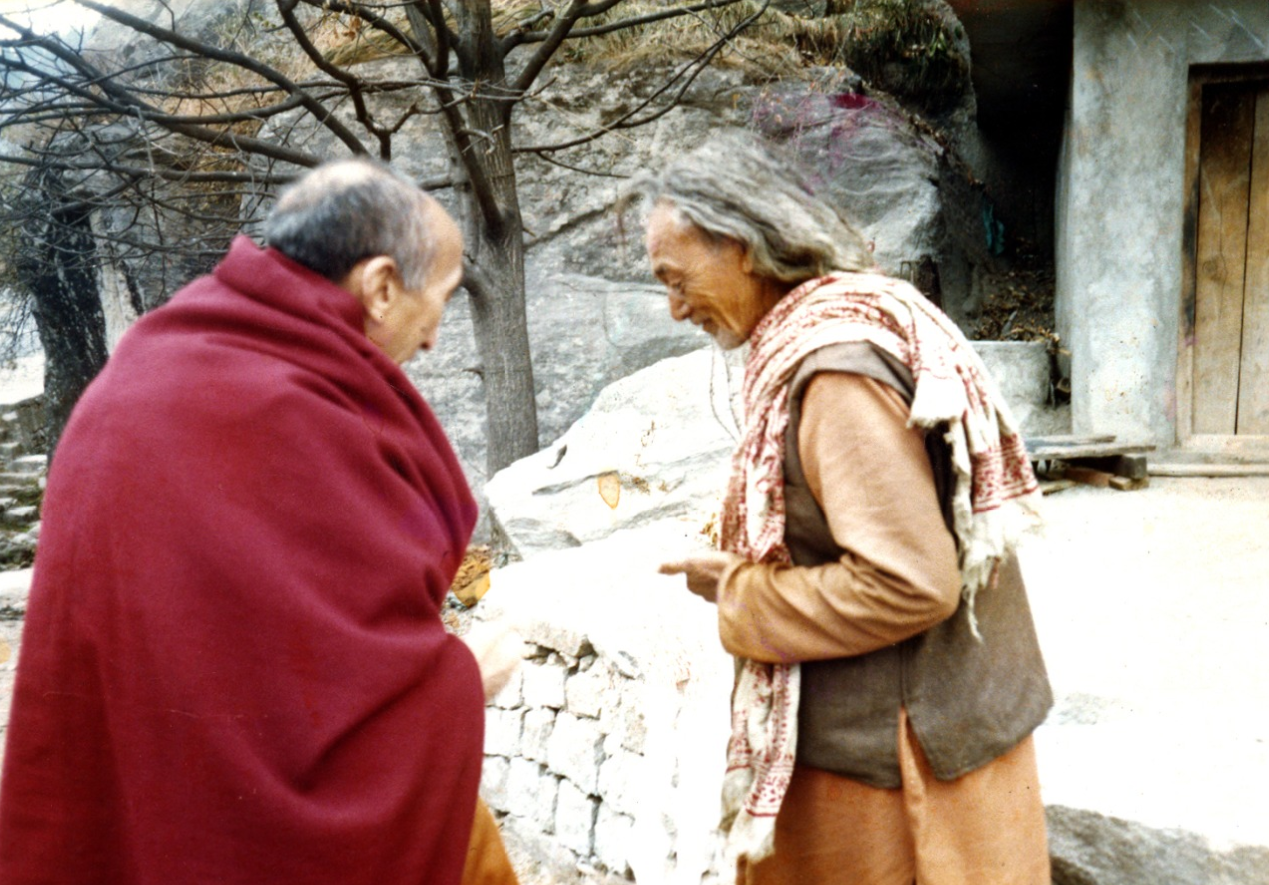The Incredible Story of a Brother’s Five Decade Search For a Lost King From Ladakh
The last time 19th Kushok Bakula Rinpoche saw his elder brother was in 1926 before he left for Tibet to complete his higher studies. But it was only 60 years later, when the brothers met in an emotional reunion.

In the past, The Better India has extensively covered the life and times of the 19th Kushok Bakula Rinpoche, a high ranking Buddhist monk, statesman, Member of Parliament and diplomat considered by many as the ‘Architect of Modern Ladakh’.
While one can find ample material on this remarkable personality online, there is a remarkable story that often escapes the attention of many. It’s a story about his elder brother Tashi Phunstog Namgyal, who was once the king of a small fiefdom called Matho about 20 km away from Leh. One day, Namgyal left home without a trace only to be reunited with his brother 60 years later.
Here is their incredible story.
Tragedies & a Long Quest
Before delving into the story, a little context is required. Rinpoche was only six years old when he was recognised as the 19th incarnation of the Bakula Arhat, who, according to the Mahayana tradition of Buddhism, was one of the 16 chief disciples of the Buddha. Destined for a monastic life, he was sent to Tibet for higher studies at the age of 10 in 1926.
This was to be the last time he would see his father Raja Nagwa Thyas and elder brother Tashi Namgyal, who succeeded him. When Rinpoche returned to Ladakh 14 years later following the death of his father in 1940, he found that his brother had mysteriously disappeared.
The circumstances of his disappearance were tragic to say the least. Married twice, Tashi Namgyal lost his first wife during the birth of his first child. After losing his father and second wife under tragic circumstances, he became a total recluse and lost all interest in worldly affairs. Distraught and unable to fulfill his temporal duties, he left his home unannounced, leaving behind a son and daughter in the care of the extended family.
Nobody knew where he had gone, and it came as a deep shock to the family. Although divination indicated that he was alive and living as a Hindu ascetic, there was no concrete evidence. But based on these divinations, Rinpoche spent nearly five decades looking for him. In these decades, he visited many holy places and pilgrimage sites like the ghats on the banks of the Ganges at Varanasi and Haridwar, making multiple enquiries and hoping to get word of his brother living among the sadhus (ascetics) there.
There were multiple reports of different sightings, but none of them panned out. Although the family had more or less given up the search nearly two-three decades after he left, Rinpoche never gave up hope of finding his brother.
While searching for his brother, Rinpoche’s own life took a very different trajectory than what one would ordinarily see from a Buddhist monk. From helping organise the defence of Ladakh from Pakistani tribal raiders in 1948, defending its interests in the face of a hostile Jammu & Kashmir government to serving the region as its two-time Member of Parliament, he helped usher the people of Ladakh into the modern age.

A Break in the Case
In 1985, when Rinpoche was serving as a member of the National Minorities Commission, he received news of a person who matched his elder brother’s physical description. The report was about an elderly hermit living in the mountain hut near Manali, Himachal Pradesh, who could speak Ladakhi. Eager to find out more, Rinpoche sent his manager, Thupstan Targyes to ascertain the actual location of where this old sadhu was living. Upon his return, Targyes told Rinpoche that this old sadhu was living at Nehru Kund near Manali.
“But it was hard to be conclusive since the old fellow would not disclose his identity to anyone…The Baba apparently maintained no relationships with anyone and never revealed his identity to visitors. Occasionally, it was reported, he would admit that he was from Ladakh, but that was as much information anyone could glean. But it was clear that Baba could understand Ladakhi and most interestingly, he also appeared to know about some people and specific incidents in Ladakh’s history that suggested he could be Rinpoche’s brother,” says Sonam Wangchuk, who was Rinpoche’s personal assistant at the time.
There were even occasions when the old sadhu would deliberately mislead people from Ladakh about his true identity. However, news of his sighting had reached other members of the family, particularly his son, daughter and sister. All of them visited the white-bearded chain-smoking sadhu, and came back convinced that the man was indeed Raja Tashi Namgyal. What strengthened their conviction was the sight of him walking with a limp, which exactly matched the way he walked. However, he never truly revealed himself to them.
Convinced, Rinpoche decided to visit him alongside Wangchuk. Arriving at Nehru Kund, 20 km away from Manali on the way to Rohtang Pass near the Beas River, during a cold autumn morning of 1986, both Rinpoche and Sonam Wangchuk found that there was no sign of a human settlement near the hut he supposedly lived in.
Also Read: The Extraordinary Ladakhi Monk Who Helped Bring Peaceful Democracy to Mongolia
The Reunion
At first, Rinpoche asked Wangchuk to visit the hut and inform the gentleman of his visit. When Wangchuk told the sadhu living inside that Rinpoche was waiting outside, he initially reacted with bewilderment that soon turned to joy. But before Wangchuk could invite Rinpoche into the hut, the sadhu asked him to help clean up the place a little and light some firewood to heat the place.
Once the dust settled, Rinpoche entered the hut.
“Having severed all worldly ties, Raja Tashi Phunstog Namgyal had never disclosed his family and personal relationships for over 60 years. But when he saw Rinpoche, his younger brother, entering the tiny room, he could not control his emotions. He stood up from his seat and tightly embraced Rinpoche…Tears rolled down my cheek as I watched these two royal princes, both of whom, in their different ways, had chosen to renounce the world and family to follow the path of spirituality, make such an emotional reunion,” recalls Wangchuk.

Rinpoche, meanwhile, also couldn’t hide his immense joy at seeing his brother after 60 years. In the ensuing conversation, Tashi Namgyal spoke of his life as an ascetic, impermanence, his journey through Burma and the neighbouring areas during World War II, how he eventually arrived at his current abode in the foothills of the Himalayas and shared his immense knowledge of both Hindu and Buddhist scriptures. In between their conversation, he would pick up the flute and play a few tunes as well. He even unwrapped his most prized possession, which was a photograph of a very young Rinpoche, and said “you see, you were always with me”.
Although the both of them hadn’t kept in touch for 60 years, Tashi Namgyal had heard of Rinpoche’s work for the people from the Ladakhis he met on his travels. At the end of the conversation, Rinpoche asked him if he would like to visit Ladakh.
“Like a true sadhu, Baba’s reply was that he would go if his Laxman (from the Ramayana epic) would go with him. To this Rinpoche nodded in agreement and promised to make the necessary arrangements,” says Wangchuk. Once Tashi Namgyal came back home, his son Rizong Sras Rinpoche, who remains till this day one of Mahayana Buddhism’s leading scholars and spiritual masters, took care of his needs. Although he spent a few months at the palace in Matho, he could never acclimatize and went back to his hut in the mountains.

It was in the autumn of 2003, when he finally passed at the ripe old age of 100. Only a few months later, Rinpoche passed away as well. He was 86 years old at the time.
Despite being born into royalty, both brothers gave up the comfortable life it entailed. While one left to serve the people, the other went on his own spiritual quest looking for answers to difficult existential questions. When they reunited 60 years later as brothers, they also found in themselves fellow ascetics eschewing the material world.
But the one thing they couldn’t give up was their love for each other.
(Edited by Saiqua Sultan)
Like this story? Or have something to share? Write to us: [email protected], or connect with us on Facebook and Twitter.
If you found our stories insightful, informative, or even just enjoyable, we invite you to consider making a voluntary payment to support the work we do at The Better India. Your contribution helps us continue producing quality content that educates, inspires, and drives positive change.
Choose one of the payment options below for your contribution-
By paying for the stories you value, you directly contribute to sustaining our efforts focused on making a difference in the world. Together, let’s ensure that impactful stories continue to be told and shared, enriching lives and communities alike.
Thank you for your support. Here are some frequently asked questions you might find helpful to know why you are contributing?


This story made me
-
97
-
121
-
89
-
167











